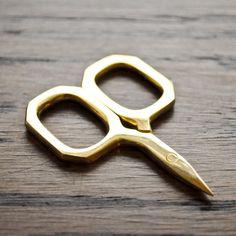Sharp objects are no joking matter, whether it’s garden shears or scissors used for everyday arts and crafts projects. When handling such objects, it’s important to know how to work with them to avoid hurting yourself or those around you. To make your life easier, and safer, here are ten safety tips to keep in mind when using scissors or shears.
1. Safety gloves
When it comes to working with sharp objects such as shears, it cannot be stressed enough that you must wear safety gloves. Avoid wearing normal gloves and opt for those gloves which can survive a few cuts from sharp objects such as a blade.
2. Handle with care
When you are working with shears or sharp scissors, never hold the tool by the sharp end and only hold it or carry it around while holding the handle. It is very easy for the sharp object to slip in your hands and cause a cut. When walking around with even a small pair of scissors, never run as a fall could prove deadly if the scissors are facing towards you. Never leave children unsupervised when scissors are involved, even if it is for a simple arts and crafts activity.
3. Be alert
When using any sharp objects, be aware of your movements. Don’t try and do several things at once when handling sharp objects and focus on the task at hand. Needless to say, never play or joke with scissors in your hand as even the slightest slip or misguided movement can cause severe injury for the person holding the scissors or for anyone near them.
4. Hold it properly
When using shears, for example while working in the garden, cut in a direction that is away from your body and use small strokes. If you are right-handed it will be easier for you to cut from right to left and if you are left-handed then cut from left to right. When using a pair of scissors, keep your wrist held in a neutral position and do not bend the wrist at any uncomfortable angle or unfamiliar position.
Always maintain good posture when using scissors and don’t bend over a table while cutting as you could easily slip. If you do happen to drop a pair of scissors, under no circumstances should you try to catch them as they fall. This is an extremely dangerous action to take with potentially disastrous results. Always let the scissors fall to the ground and only then proceed to pick them up.
5. Maintenance
Keeping your scissors sharp will ensure that they don’t require a lot of force to make them work properly. If your scissors have been used heavily for an extensive period of time, getting them sharpened by a professional scissors sharpener will ensure they remain as good as new and will extend their lifespan. It is also useful to apply a little bit of oil in the screw slot and hinge area using some fine oil. If not after every use, then at least once a week, remove any dust, fluff or other fragments from the blades of the scissors and shears.
6. Use for correct purpose
Never use a pair of scissors for scraping a surface or screwing or prying any object from or onto a surface. Only use scissors for the purpose for which they are intended. This means using trimming scissors for cutting loose pieces of thread and using fabric scissors for cutting cloth.
7. Good lighting
Working in a well-lit environment can make a big difference. Avoid using scissors, or even shears, in dimly lit areas, and obviously never work with such tools in the dark.
8. Store correctly
Scissors are often used among children who may not be aware of the potential dangers of the tool so when putting away scissors, always place them downwards, and preferably in a place that is out of reach for the child. Always tell the child to sit at a table and only then use scissors, never while walking or running. Sitting at a table while cutting allows you to observe what the child is doing as well. If children absolutely must walk with scissors, they should close the blades, grasp the closed blades and point them towards the floor before walking.
9. Inspect first
Before using any tools such as shears or scissors, always make sure you inspect the item for any damages. This could mean looking out for cracked, bent or loose handles especially. If you are not sure how to use a tool, always ask someone who knows. Never attempt to learn ‘on the job’ as this could prove dangerous.
10. Take a break
When working in a garden using shears, keep taking frequent short breaks to reduce the chances of repetitive motion injuries which take place when the same movement occurs repeatedly over a long period of time. These type of injuries can be either temporary or permanent and can affect your muscles, ligaments, tendons and nerves.
When working with sharp objects, it is of utmost importance to keep safety precautions in mind and not take any risks. Remember to always use the appropriate tools for every job that you undertake whether it is trimming the hedge in your garden or simply cutting several strips of paper for a children’s art project.
Author:
Nicola Reynor is an editor at Home Build Company that is a scissors manufacturer. Rose Martin loves blogging on fashion, women, parenting, travel and lifestyle. Rose is also interested in music, fitness and art. In spare time, she loves to spend time with family and friends.
























